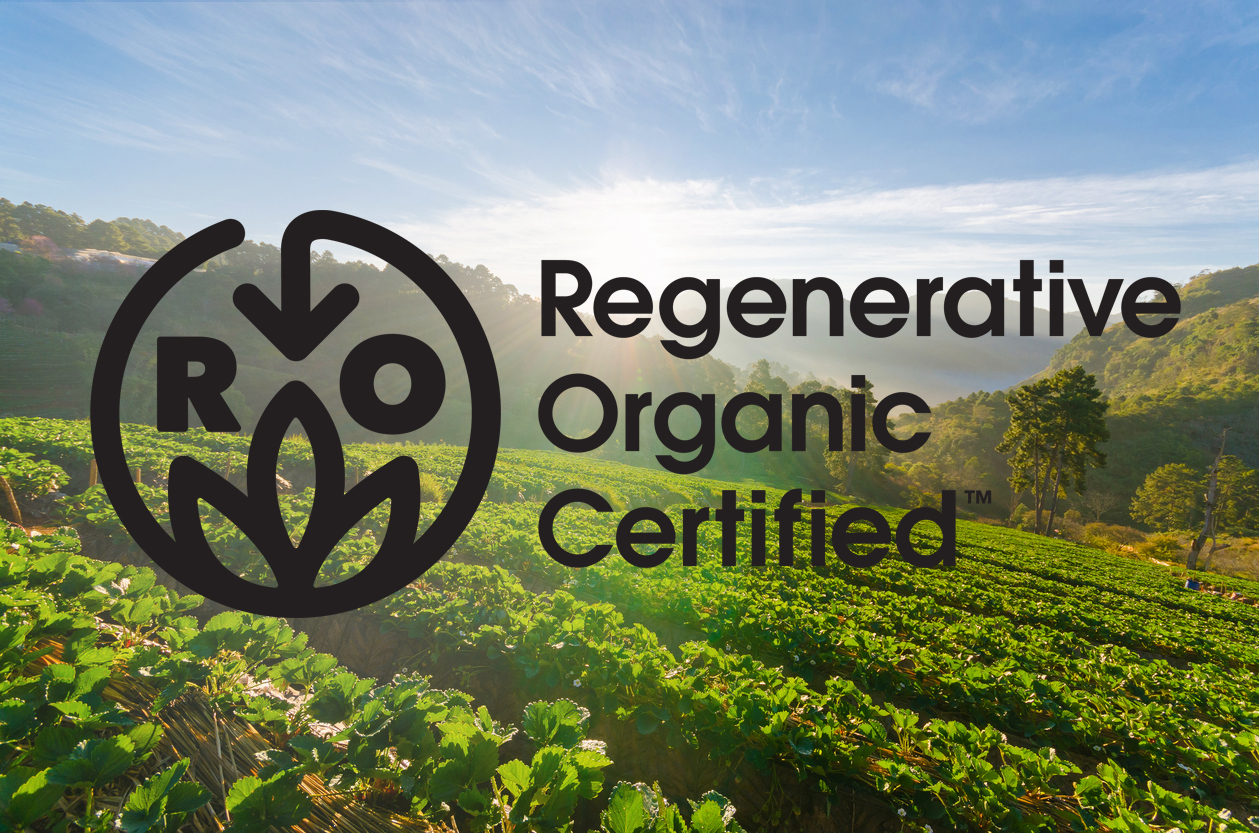How regenerative agriculture could mitigate the effects of climate change

By Surya Zeeb
Published: November 25, 2019
Category: The Organic & Non-GMO Report Newsletter
By Emily Folk
As protesters take to the streets all over the world, it seems the effects of climate change have finally become widely known and accepted.
Many people already consider organic farming an essential part of humanity’s response to a warming planet. Yet a concept called regenerative organic agriculture will take this concept further. Thanks to the emergence of a set of principles and official certification from the Regenerative Organic Alliance (ROA), farmers and agricultural companies know what to expect as they embark on this quest.
What Is Regenerative Agriculture?
The ROA’s Regenerative Organic Certification standard was published for the first time in September 2017 and has undergone two revisions. During its pilot phase, the program accumulated more than 80 applications from interested agricultural companies, nonprofits and farms of all sizes. The pilot is set to conclude in 2019, at which point the program will open for general applications.
Why the sudden interest?
Agricultural activities precipitate climate change, which in turn makes farmers’ lives more difficult. Higher than average temperatures and frequent extreme events—such as floods and droughts—will make it increasingly challenging to raise the food needed to feed a growing population.
What needs regenerating, and why? The short answer—our farmland topsoil is in dire need of rejuvenation. Soil also plays an underappreciated role in moderating the world’s climate patterns.
Regenerative agriculture is not federally recognized in the U.S. the same way organic agriculture is. The USDA’s National Organic Program, which began in 2001, prescribes agricultural practices that don’t use synthetic pesticides, fertilizers or patented organisms (GMOs).
Regenerative agriculture takes these concepts further. According to the Rodale Institute, the world has only about 60 years of farmable topsoil left if we continue our techniques without any changes.
Broadly, regenerative agriculture seeks to reinvent farming resource management through the following tenets:
- Reduce and eliminate tillage: Plowing destroys fungal communities and reduces soil aggregation, both essential for biodiversity, preventing soil erosion and sequestering carbon dioxide.
- Use natural, not chemical, techniques: Instead of using chemicals for crop and pest management, farmers can improve soil health and crop yield by planting cover crops, rotating crops and using compost and manure in place of synthetic fertilizers and pesticides.
- Improve carbon sequestration with grazing: Rotating livestock before they graze a pasture bare maintains soil and plant health.
Each of these practices helps reduce the amount of water farmers must apply to crops. Wherever irrigation systems are necessary, regenerative farming calls for improved efficiency. Sensors and other technologies play a role by providing farmers with greater access to environmental and soil data, helping them be more strategic about water use.
It’s important to mention that many conventional farmers have been practicing these techniques and that regenerative agriculture is a growing trend in conventional farming.
What Regenerative Farmers Need to Know
Regenerative farming as a concept dates back to the 1980s, but it wasn’t until 2018 that the first ROA Regenerative Organic Certification appeared.
The ROA maintains two publications for farmers interested in adopting regenerative farming practices—a Framework for Regenerative Organic Certification and a Participant Handbook. These texts describe specific actions farms must take to join the Alliance, including multiple levels of involvement to ease the learning curve and implement changes gradually.
Soil health is the most significant pillar of modern regenerative agriculture. Others include animal welfare and social fairness. Pasture-raising animals and reducing transport distance are both essential goals for regenerative-minded farms.
Social fairness has to do with transparency and accountability in agriculture, as well as fair pay, long-term relationships and good working conditions.
In addition to engaging in strategic animal grazing, some farms are increasing the variety of nutrients in their topsoil. Some take in waste from local fisheries and sawmills and combine it with liquid manure fertilizer produced onsite.
Why Is This Important Right Now?
In 2010, agriculture accounted for 24% of greenhouse gas emissions in the U.S. However, a portion of this carbon may be sequestered in dead organic matter. As we’ve established, the ability to sequester carbon in topsoil is in danger.
Other certifications are available for applications, too, including the Sustainably Grown Program (SGP). The SGP names soil health as one of its primary focuses and seeks to prioritize a healthy business, planet and people.
The direct, primary objective of regenerative farming is to improve soil health and maintain it at a high level. Soil improvements will prevent the global topsoil disaster environmental experts predicted roughly 60 years ago. By 2050, if current trends continue, humanity will have one-quarter the amount of productive farmland it had in 1960.
When we talk about filtering carbon dioxide from the atmosphere, forests tend to receive the bulk of the attention. However, we cannot ignore what’s under our feet. Soil plays a significant role in absorbing carbon and filtering the world’s water table.
As our farmland becomes less capable of storing carbon, our planet inevitably gets hotter as a result. Efforts like the quickly growing Regenerative Organic Certification program prove we’ve got the ideas to turn things around.
About the author:
Emily Folk is passionate about environmental sustainability and is the creator of Conservation Folks.




